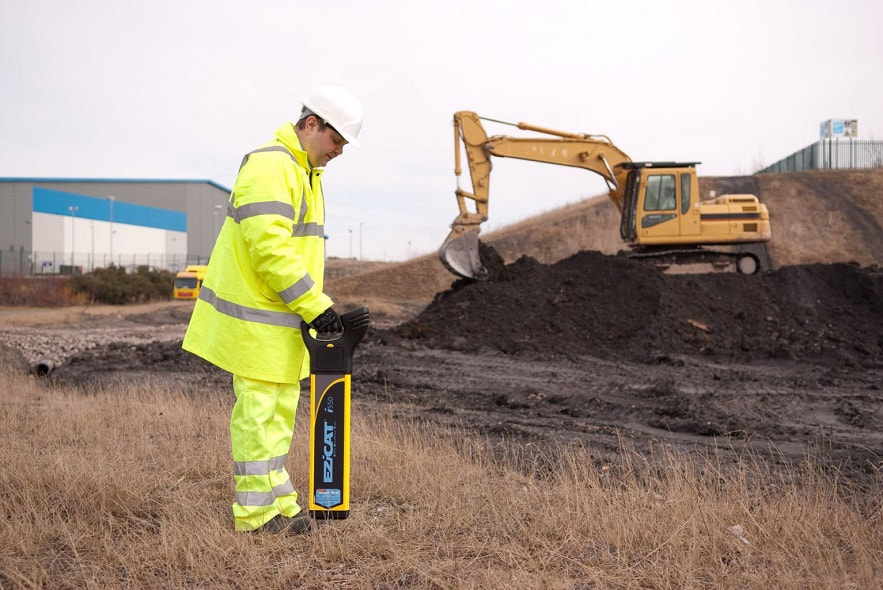The modern day construction workers make use of many intricate and specialized pieces of equipment to help them finish their tasks in a more efficient and effective manner. This equipment varies depending on the role it fills, such as the pneumatic tools like the jackhammer or the nail gun. And all of their tools fit different tasks. One of these tasks involves finding and digging out cables and underground wires for repair, maintenance or reconstruction.
However there is a certain piece of kit that is made to avoid the need of digging the cable out for repairs, by using a magnetic field to detect any piping and cables underground. These tools are reffered to as cable locators, utilizing a magnetic field to send and recieve signals that oscilate into the ground to determine the location of the cable and anything that is near it.
The cable locator accurately identifies the location and depth of the underground cable. Some locators also have the added function of fault finders that serve a similar purpose, but their primary use is in their namesake which is finding faults and problems in underground cables. They are usually sepertate tools that are ordinarily used together. In addition to location, the information shown includes the strength of the signal, direction of the cable and the current amperage.
This equipment has two basic components: a hand-held reciever and a compact transformer, which takes the magnetic oscilations and displays them on a screen at the top. The kit is powered by batteries sittuated in it's relatively light outter weather resistant case. The bottom of the transformer houses the magnet that creates the field that it uses to detect anything that may be underneath it. To achieve this there are two methods of cable location, active and passive which both require the underground cable to conduct electiricity.
Active locating is when a transmiter is used to introduce an electric current into the cable, then a reciever is used to locate the cable based on the current. An active signal cannot be applied to a non-conductive utility line, to combat this, a detectable duct rod or self contained transmitting sonde (which is a transmitter attached to a wire that can be easily placed and retrieved from piping) must be inserted into the line via manhole or some other form of access port. Passive however is when a reciever detects a current that is already circulating in the cable which is usually a functioning cable and is only done for maintanence and check-ups. However when repairs are needed passive should also be done only if there is no other option but to use said method.
The cable locator accurately identifies the location and depth of the underground cable. Some locators also have the added function of fault finders that serve a similar purpose, but their primary use is in their namesake which is finding faults and problems in underground cables. They are usually sepertate tools that are ordinarily used together. In addition to location, the information shown includes the strength of the signal, direction of the cable and the current amperage.
This equipment has two basic components: a hand-held reciever and a compact transformer, which takes the magnetic oscilations and displays them on a screen at the top. The kit is powered by batteries sittuated in it's relatively light outter weather resistant case. The bottom of the transformer houses the magnet that creates the field that it uses to detect anything that may be underneath it. To achieve this there are two methods of cable location, active and passive which both require the underground cable to conduct electiricity.
Active locating is when a transmiter is used to introduce an electric current into the cable, then a reciever is used to locate the cable based on the current. An active signal cannot be applied to a non-conductive utility line, to combat this, a detectable duct rod or self contained transmitting sonde (which is a transmitter attached to a wire that can be easily placed and retrieved from piping) must be inserted into the line via manhole or some other form of access port. Passive however is when a reciever detects a current that is already circulating in the cable which is usually a functioning cable and is only done for maintanence and check-ups. However when repairs are needed passive should also be done only if there is no other option but to use said method.

